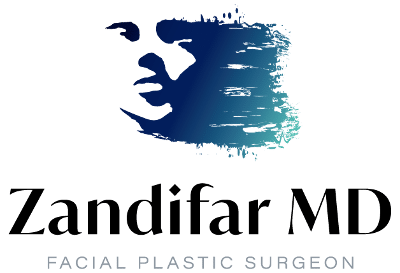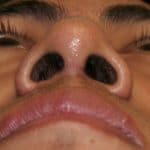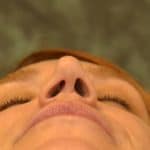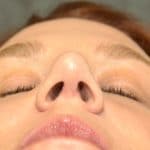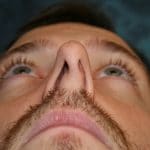Treating a Deviated Septum with a Septoplasty
Few things can negatively affect one’s quality of life like not being able to breathe well.
If you struggle to get air through your nose, you may have a deviated septum. While this common condition can be particularly annoying when you’re trying to sleep or exercise, septoplasty, also known as functional rhinoplasty surgery, may be able to help you regain the full functionality of your airway and breath easily again.
Here is what you should know before scheduling a free consultation with Dr. Zandifar in Beverly Hills or Santa Monica to see if a nasal septoplasty surgery may be an option for you.
What Are the Symptoms of a Deviated Septum?
The main indicator that a person has a deviated septum is that their nasal septum, the thin wall between one’s nasal passages, has been obstructed to one side. In some patients, however, there may be a bilateral obstruction or other symptoms to include:
- Difficulty breathing through one or both nostrils.
- Frequent nosebleeds.
- Facial pain.
- An excessive awareness of obstructions inside the nose.
- Needing to sleep on a certain side for breathing purposes.
- Headaches.
- Post nasal drip.
- Snoring and loud breathing.
What to Expect from a Septoplasty
Before Surgery
Prior to your nasal septoplasty, Dr. Zandifar will inform you of the details of the surgery, discuss your medical history, and answer any questions you may have. He may also require you to complete routine tests, such as blood work and X-rays. It’s important to inform Dr. Zandifar of any allergies you have and medications you are currently taking. The anesthesiologist will meet with you before administering the anesthesia to go over any potential risks and concerns you may have. Because you will be given general anesthesia during your septoplasty, you will not be able to eat or drink anything after midnight the night before your nasal septum reconstruction. It is suggested that you should also avoid taking blood thinners for at least two weeks if medically able too.
During Surgery
Once the general anesthesia has been given and you are fully unconscious, Dr. Zandifar will straighten the bent cartilage and bone that is obstructing the septum. He will then reshape the cartilage and bone and may remove parts of it if necessary.
After Surgery
After you wake up from surgery, you may feel sleepy and nauseous from anesthesia. You may also feel pain or discomfort from the surgery itself, which can be treated with prescription or over-the-counter medications as needed. Dr. Zandifar will insert a splint, which is a soft plastic stent to keep everything straight and will be removed one week post-surgery. Congestion, discomfort, and nose bleeds are normal for the first two weeks after surgery but should subside quickly after your nose heals.
Before/After Gallery
A Commitment to Excellence
Hootan Zandifar, MD, FACS, Board Certified Facial Plastic & Reconstructive Surgeon
FAQ
When Should You See a Doctor for a Deviated Septum?
The best time to see a doctor for a deviated septum is when you feel like you can’t breathe well through your nose. This may be more noticeable during exercise, meditation, or sleeping and less noticeable when awake.
What Are the Treatment Options for a Deviated Septum?
The only true treatment option for a deviated septum is surgery. A deviated septum is basically a crooked wall inside your nose that blocks the passage of air. There is no medication or at-home remedy that can improve this condition.
Will Insurance Cover a Septoplasty?
To see if your health insurance plan covers the cost of a septoplasty as well as what out-of-pocket cost you can expect to pay, please contact our office.
What is Deviated Septum Surgery?
Nasal septum reconstruction, also known as a septoplasty, is a reconstructive surgical procedure done to treat nasal blockages. It is performed entirely through the nose, which leaves no external scars. Through this approach, Dr. Zandifar can straighten a patient’s septum and greatly improve their ability to breathe.
How Painful is Deviated Septum Septoplasty?
Although it can be a little uncomfortable, deviated septum surgery is not very painful and most patients tolerate it very well.
Is Deviated Septum Surgery Worth It?
If done properly on a patient who is suffering from poor quality of life due to a deviated septum, septoplasties leave most patients highly satisfied.
Schedule Your Consultation
If you are suffering from the discomfort of a deviated septum, Dr. Zandifar can help. Book your consultation today to learn more about how a septoplasty can change your life for the better!
Beverly Hills Office
8920 Wilshire Blvd, Suite 604
Beverly Hills, CA 90211
Santa Monica Office
2811 Wilshire Blvd, Suite 640
Santa Monica, CA 90403

